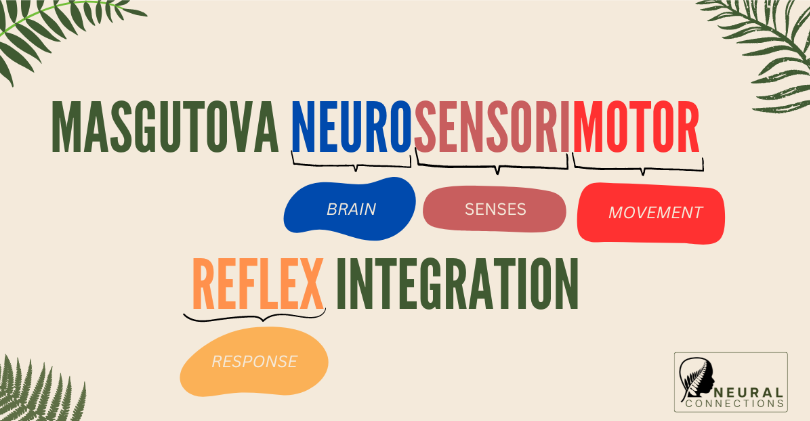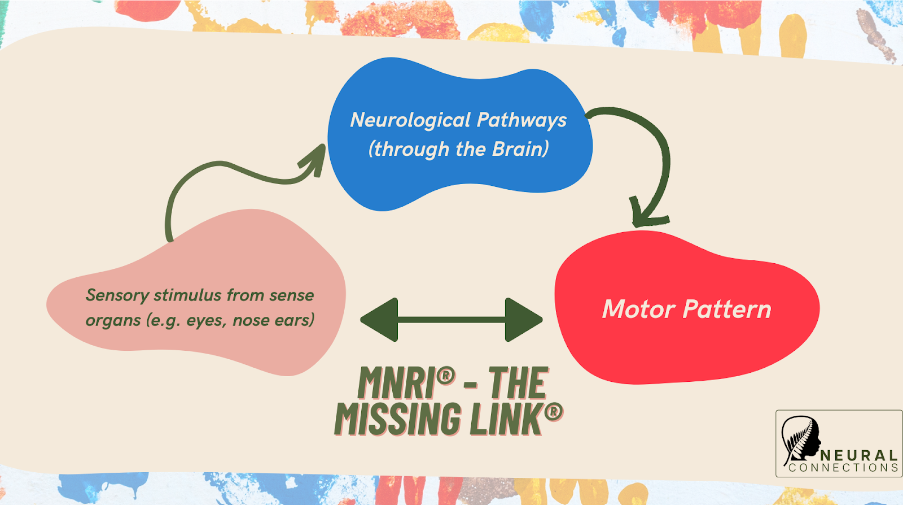What is MNRI and How does it help?
Over here at Neural Connections, you’ve probably heard us talking and sharing about MNRI® and its extensive protocols – but what exactly is it and how does it work?
MNRI® stands for the Masgutova Neurosensorimotor Reflex Integration.
This somatic method was founded by Dr Svetlana Masgutova, a Russian cognitive psychologist, in the 1980s. Her extensive work and experience with survivors of natural and man-made disasters who suffered from trauma became the foundation of MNRI®. Dr Masgutova drew from research and her knowledge of not just psychology, but also physiology, neurology, and psychology to audiology, and ophthalmology to name a few.
MNRI® is a bottom-up approach to bridge the brain and the body through reflex integration. This is why it’s often called The Missing Link®.
A reflex is a motor response that occurs each time a particular stimulus (or combination of stimuli) is presented. It can be an automatic or conditioned response. Through working directly with the body using movement, touch and other techniques, MNRI® helps to integrate and repattern reflexes in the body that may not have fully developed or integrated for any number of reasons.
Congenital disorders, trauma (including birth trauma), and prolonged, intermittent or chronic stress can interrupt the development of reflexes. When this happens, the body compensates leading to the body staying in survival or in protection mode and not functioning in the way that it was naturally designed. MNRI® operates from the baseline that we need to address these root causes to deal with whatever challenge an individual is facing.
In today’s modern landscape, we’ve gotten used to the idea of seeing different specialists for different issues. For example, we go see a podiatrist for foot pain, a physiotherapist to rehabilitate movement, and we see a counsellor, neurologist. In contrast, MNRI® approaches an individual’s challenge through a holistic and global approach. With the comprehensive protocols that Dr Masgutova has developed, MNRI® can be tailored specifically to an individual’s needs and challenges.
How does it work?
When the sensory stimulus such as touch, sound, or smell go to the brain, this is processed and sent back for instructions for motor movement patterns. The MNRI® protocol adds to the base to the triangle creating a clear and accurate communication between the sensory and motor systems.
Who Benefits from MNRI®?
MNRI helps anyone with a nervous system, regardless of age and condition. It can help with a vast array of issues, whether it is ADHD, psychological issues, or developmental difficulties precisely because there is a huge number of modalities. There are for example protocols such as: “Toolkit for Dyslexia, “Stress and Trauma Recovery”, “Dynamic and Postural Reflex Integration”, “Oral-Facial”, or “Visual and Auditory” among others, which target different areas or issues of the body.
It can help with a child facing academic difficulties, or people in need of emotional and behaviour regulation, and also add to the lives of those who are gifted and talented. Incorporating MNRI® protocols can be hugely effective because the techniques are simple but the effects are profound.


